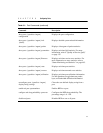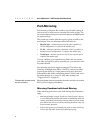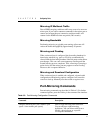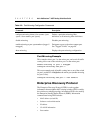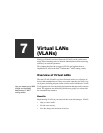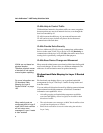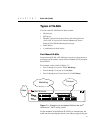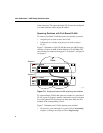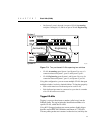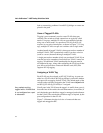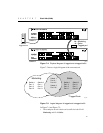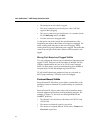
96
Intel
®
NetStructure™ 480T Routing Switch User Guide
VLANs Help to Control Traffic
With traditional networks, broadcast traffic can cause congestion,
because packets are sent to all network devices, even though the
data is not needed by all.
VLANs increase the efficiency of your network because each
VLAN can be set up to include only those devices that must
communicate with each other.
VLANs Provide Extra Security
Devices within each VLAN can only communicate with member
devices in the same VLAN. For a device in VLAN Marketing to
communicate with devices in VLAN Sales, the traffic must cross a
routing device specifically configured for that purpose.
VLANs Ease Device Change and Movement
VLANs are not based on
physical location.
Therefore physical moves
of devices do not require
manual system updating.
Many network administrators spend much of their time dealing with
moves and changes. If users move to a different subnetwork, the
addresses of each endstation must be updated manually.
Bi-directional Rate Shaping for Layer 3 Routed
VLANs
For more information see
"Bi-directional Rate
Shaping for Layer 3
Routed VLANs" on page
163.
Bi-directional rate shaping allows you to perform bandwidth
management for Layer 2 and Layer 3 traffic flowing both to and
from the switch.
You can achieve bi-directional control by defining queue minimum
and maximum bandwidth parameters to build true committed
information rate capabilities. Also:
• All traffic grouping and bandwidth-management capabilities
associated with Quality of Service (QoS) can be used for both
directions of traffic.
When switch ports are
configured while in Layer 2
mode, MAC block conflicts
will not return error
messages if Layer 3 mode
is later enabled.
• The switch returns error messages on MAC block conflicts when
you add rate-shaped ports to VLANs.
• MAC block restrictions do not exist when using the switch as
Layer 2 only.




